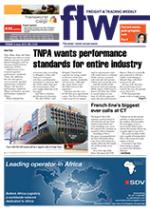Railways have for too long been
the “black sheep” of surface
transport
in southern
Africa, but if
governments
are serious
about
competing on
a global trade
stage they
will put their
money where
their mouth
is and ensure
the future
of national
railways.
This was
the hard-hitting message
expressed at the fourth annual
Southern African Railways
Association (Sara) conference
held in Midrand last week. “We
have proven that railways can
play a vital role in increasing
the competiveness of the
regional supply chain, lower
the costs of doing business
and stimulate and increase
intra-regional
trade. It is time
governments
took
responsibility
for the ongoing
sustainability of
railways. So we
say, let there be
a railway line,”
said Bernard
Dzawanda,
executive
director of Sara.
Albert
Kamhunga,
CEO and
managing director of Manica
Zimbabwe, noted that it
currently cost twice as much as
the global average to operate
a railway in southern Africa
and that there were several
“missing links” that needed to
be addressed before regional
railways could live up to their
promised competitive potential
and gain surface transport
market share.
“The current market share
for rail in southern Africa
is around 15%. To ensure
sustainability the industry
needs to significantly
increase that over the next
few years,” said Kamhunga.
Dzawanda added that current
challenges that threatened
to derail the road-to-rail
migration strategy included
operational inefficiencies,
major maintenance backlogs,
capacity issues and other
expensive modes of transport
(air and road) being applied
inappropriately.
“To address those challenges
we need high-level government
intervention to guide resource
allocation, to promote regional
integration and to guide
economic behaviour through
stabilisation, legitimisation and
regulation,” he said.
INSERT & CAPTION
We need highlevel
government
intervention to guide
resource allocation
and to promote
regional integration.
– Bernard Dzawanda

